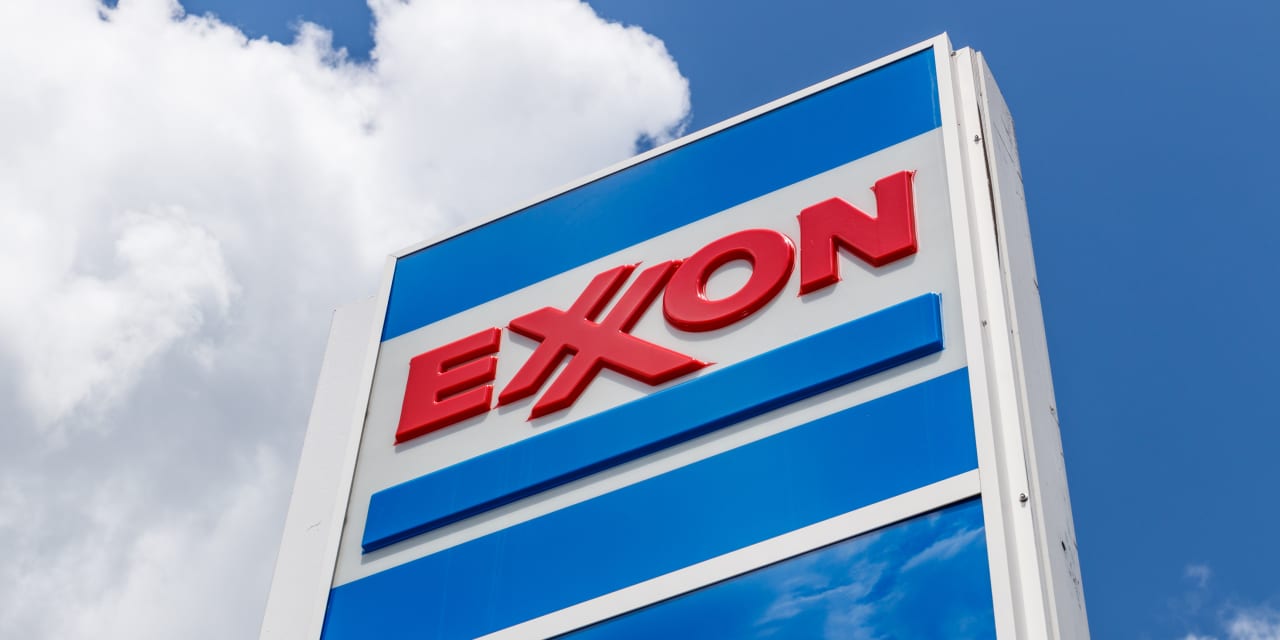Exxon Mobil
confirmed a deal to buy
Pioneer Natural Resources
on Wednesday, cementing itself as the dominant oil producer in the Permian Basin region of the U.S. The early assessment from several analysts is that Exxon is paying a reasonable price, buying a well-regarded producer at a modest valuation.
After including Pioneer’s debt, Exxon (ticker: XOM) will pay $64.5 billion in the all-stock transaction. It is Exxon’s biggest acquisition since its merger with Mobil in 1999.
The takeout price values Pioneer at 5.9 times its earnings before interest, taxes, depreciation, and amortization — a discount to Exxon’s own valuation of six times Ebitda, according to Tudor Pickering Holt analyst Jeffrey Lambujon.
The deal values Pioneer shares at an 18% premium to where they were trading before The Wall Street Journal reported last week that the deal was close to being finalized. Exxon shares were down 3.5% in early trading. Pioneer (PXD) rose 1%.
“The deal was highly anticipated and we expect the 18% premium to be viewed fairly and do not anticipate rival bids,” wrote TD Cowen analyst David Deckenbaum.
“Pioneer is a clear leader in the Permian with a unique asset base and people with deep industry knowledge,” said Exxon Mobil CEO Darren Woods. “The combined capabilities of our two companies will provide long-term value creation well in excess of what either company is capable of doing on a stand-alone basis.”
Acquiring Pioneer will jumpstart Exxon’s U.S. production growth, more than doubling its output in the Permian to about 1.3 million barrels a day. Exxon’s U.S. production has declined recently.
“U.S. production volumes have actually been negative for the past four quarters–a stretch not seen since 2018,” noted Peter McNally, global sector lead for industrials, materials and energy at Third Bridge.
The combined company will be able to produce 2 million barrels per day in the Permian by 2027, Exxon said. Globally, Exxon is targeting 5 million barrels of daily production by 2027. That would represent about 5% of the total global oil supply. Pioneer’s acreage in the Midland Basin, the eastern part of the Permian, has some of the U.S.’s largest untapped fields.
The deal reaffirms Exxon’s commitment to production of oil and gas and gives it room to grow domestically, avoiding geopolitical tension. But doubling down on oil comes with risks too, depending on the speed of the energy transition. Pioneer had been investing in technology to reduce emissions, but not as aggressively as some competitors.
Exxon says it expects to accelerate Pioneer’s emission-reduction strategies.
The deal comes after crude prices started to pick up again. Crude has mostly fallen this year after a strong climb in 2022 that led to record profits at Exxon and other Big Oil firms. The attack on Israel this week pushed prices higher on concerns that the conflict could disrupt global supply, illustrating the benefits of having more exploration acreage at home.
The Organization of the Petroleum Exporting Countries and Russia have announced reductions in output to keep prices from falling back too much now.
The Exxon deal is the biggest so far this year. It eclipses
Occidental Petroleum
‘s (OXY) purchase of Anadarko for $38 billion in 2019.
It remains to be seen if this leads to more consolidation in the industry. Other shale drillers rose.
Diamondback Energy
(FANG) was up 0.8%, while
Permian Resources
(PR) was 0.1% higher, slipping back from a larger gain seen in premarket trading.
Write to Brian Swint at [email protected]
Read the full article here








